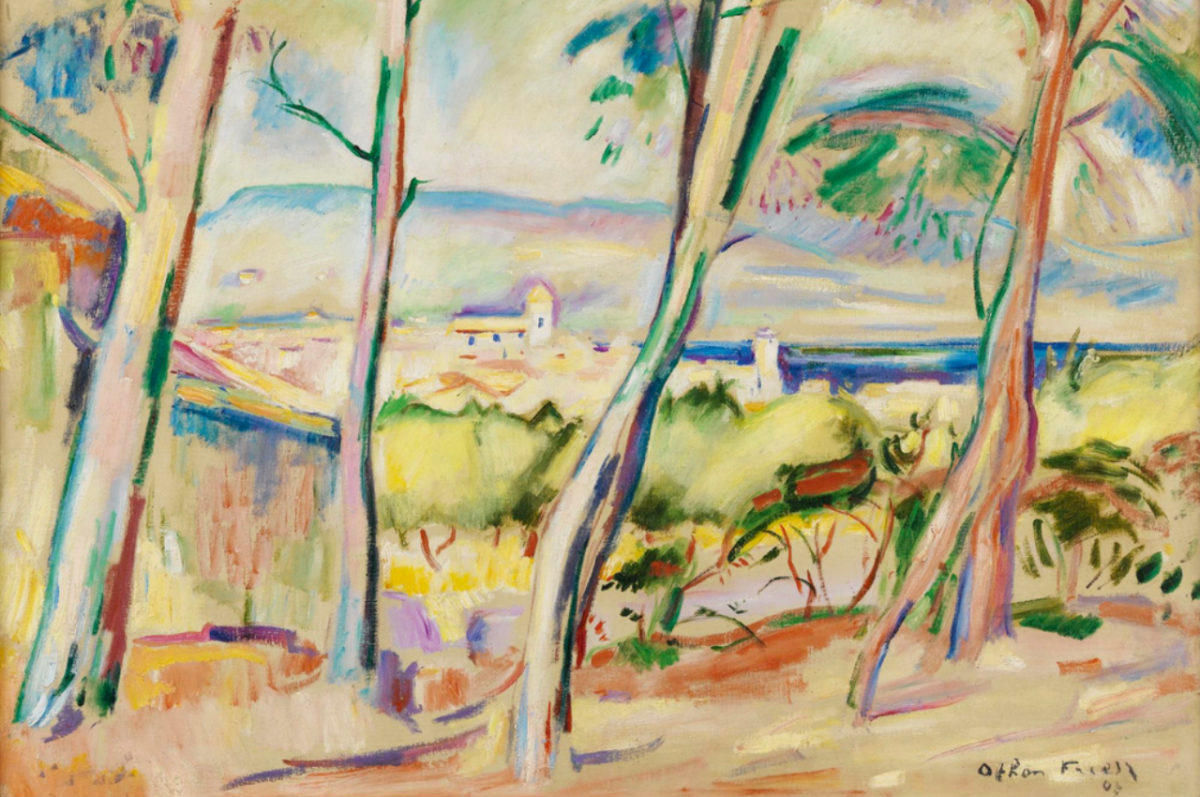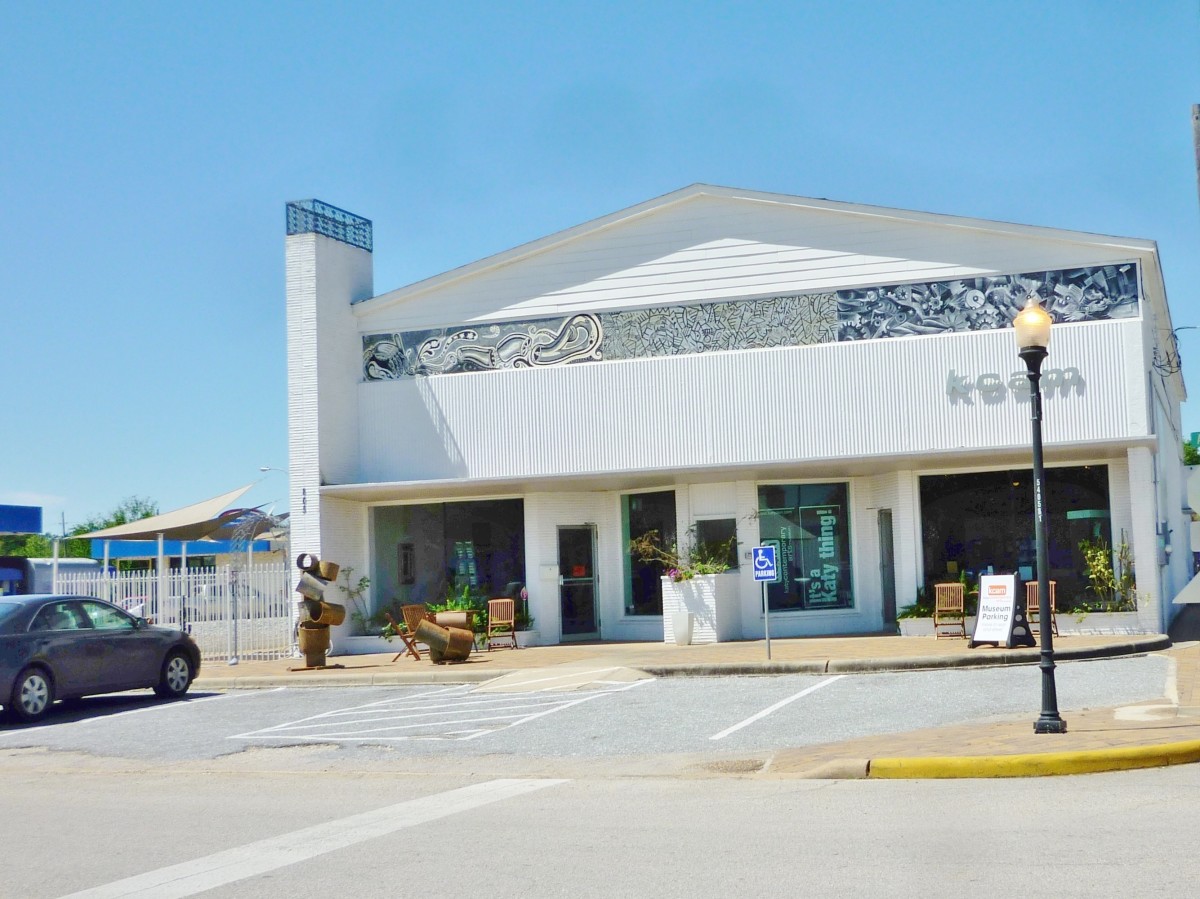Death in the Work of Damien Hirst
While not yet as well-known as Andy Warhol or Salvador Dali, British artist Damien Hirst is the world's richest living artist. His estimated net work is $300,000,000 and Hirst collector Charles Saatchi believes he will be remembered right alongside Andy Warhol in future art history books discussing 20th century art.
His work often contemplates death, especially his two most well-known pieces, The Physical Impossibility of Death in the Mind of Someone Living and For the Love of God.
" You can frighten people with death or an idea of their own mortality, or it can actually give them vigour." - Damien Hirst
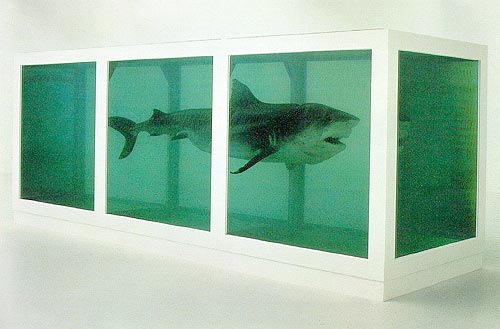
The Physical Impossibility of Death in the Mind of Someone Living (1991)
Exhibited at Saatchi Gallery in 1991, The Physical Impossibility of Death in the Mind of Someone Living is not a painting but a shark submerged in a vitrine full of formaldehyde. The piece also examines fear in American culture, referencing Steven Spielberg's movie Jaws. Fear is also a recurring theme in Hirst's work, probably second in recurrence only to death.
“I wanted a shark that's big enough to eat you, and in a large enough amount of liquid so that you could imagine you were in there with it.” - Damien Hirst
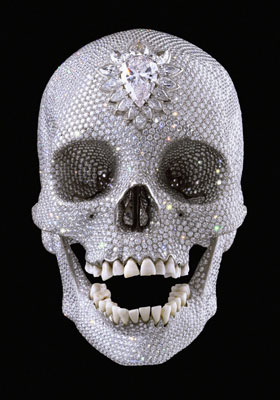
For the Love of God (2007)
Hirst intended For the Love of God to be a memento mori, a practice that goes back to the Medieval era when sculptors would incorporate skeletons into church architecture to remind churchgoers of their mortality. An Aztec skull also inspired Hirst to create the piece. The Aztecs actually viewed death as another phase of life.
"Immortality is really desirable, I guess. In terms of images, anyway.”
Although it resembles a reliquary, the thousands of diamonds encrusted on the skull don't preserve a saint, just an anonymous 18th century European. It's focus on anonymity rather than celebrity makes it a more universal symbol of humaity. For the Love of God has been exhibited all around the world - from London, to Amsterdam, to Florence.
More Animals in Vitrines Full of Formaldehyde
Mother and Child (Divided), 1993. A cow and calf split in half bilaterally and divided into four vitrines. Hirst has stated he was making a comparison to relationships: “in any sort of relationship, like trying to keep a relationship together when it is falling apart.” Aside from form, the idea of creating a visual metaphor for emotional content goes was back, for example Albert Pinkham Ryder's use of storms to indicate inner turmoil.
Away from the Flock (Divided), 1995. Two vitrines each with one half of the same sheep stand side by side. This piece is well known because it was vandalized by an artist named Mark Bridger who poured black ink into the formaldehyde and renamed the piece "Black Sheep."
God Alone Knows, 2007. Three sheep are suspended in neighboring vitrines on the wall and posed in the shape of Jesus on the Cross with his head falling to the side.
Theology, Philosophy, Medicine, Justice, 2008. Two vitrines stand side by side each other each with two sharks swimming past one another.
Schizophrenogenesis, 2008. Two flayed cow's heads in the same case stare at one another. This is an interesting visual representation of the creation of another person in a schizophrenic's mind.
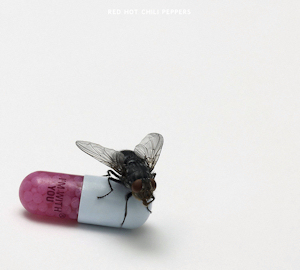
Recurring Imagery in Damien Hirst's Work
- Sharks
- Flies
- Pills
- Sheep
- Butterflies
- Skeletons
- Cows
Other Works About Death
A Thousand Years, 1990. This was one of Hirst's first pieces about death.Inside a vitrine a cow's head rots while while's buzz around and breed maggots from the cow.A fly trap hands from the top of the vitrine and dead flies accumulate on the ground as new ones are born.First shown at a warehouse show called 'Gambler' this was the piece that impressed Charles Saatchi and earned his patronage for the next decade.
An Unreasonable Fear of Death and Dying, 2000.This is a recreation of a cramped, messy living room and bathroom inside glass cases.A chainsaw rests on the empty armchair in front of the t.v., perhaps indicating a message on America's fear culture that compels them to stay in their homes, watch t.v., buy weapons, and travel little.
Dance of Death, 2002.Dance of Death is a huge canvas, 28 feet long, that is full of painted pills.Hirst has done other pieces like Pharamacy that raise questions about the role of commercialized pharmaceuticals and surgery in our society. The pills are an interesting substitute for the skeletons of the medieval allegory of Danse Macabre, that shows how we think about death differently in contemporary culture. We buy pills to stay healthy, but we also abuse them, showing our fear of dying but our parallel struggle with living.
Leukaemia , 2003. Hirst continues his interest in flies with Leukaemia, a vertical rectangular canvas made up of thousands of flies, forming a grisly textured surface.
And the Lord God Made Them All, 2005 - 2006. No formaldehyde was used in this piece.A menagerie of animal skeletons on black plaques occupy four different levels inside the vitrine.
A Dark Place, 2006. A Dark Place is another piece like Leukaemia. A large black circlular canvas made up of thousands of dead flies glued to the canvas hangs on a wall.
A Titillating Turquoise Kiss, 2006. Here Damien Hirst has attached dead butterflies to a blue canvas, painting over the tips of their wings to make it look like they got stuck in the paint.Hirst also used butterflies at the beginning of his career, before he even used flies.
All of these pieces can be seen on Damien Hirst's official website.
- Home - Damien Hirst
Damien Hirst
A Timeline of Damien Hirst's Works About Death
1990
| A Thousand Years
|
|---|---|
1991
| The Physical Impossibility of Death in the Mind of Someone Living
|
1993
| Mother and Child (Divided)
|
1994
| I Love Everything about You
|
1995
| Away from the Flock (Divided)
|
1996
| Yes, but how do you really feel
|
2002
| Dance of Death
|
2003
| Leukaemia
|
2006
| A Dark Place
|
A Titillating Turquoise Kiss
| |
2007
| For the Love of God
|
2011
| I'm With You, Album Cover for the Red Hot Chili Peppers
|
What do you think of Damien Hirst's work?
Damien Hirst Interviewed by Noel Fielding
Recommended Books on Hirst


